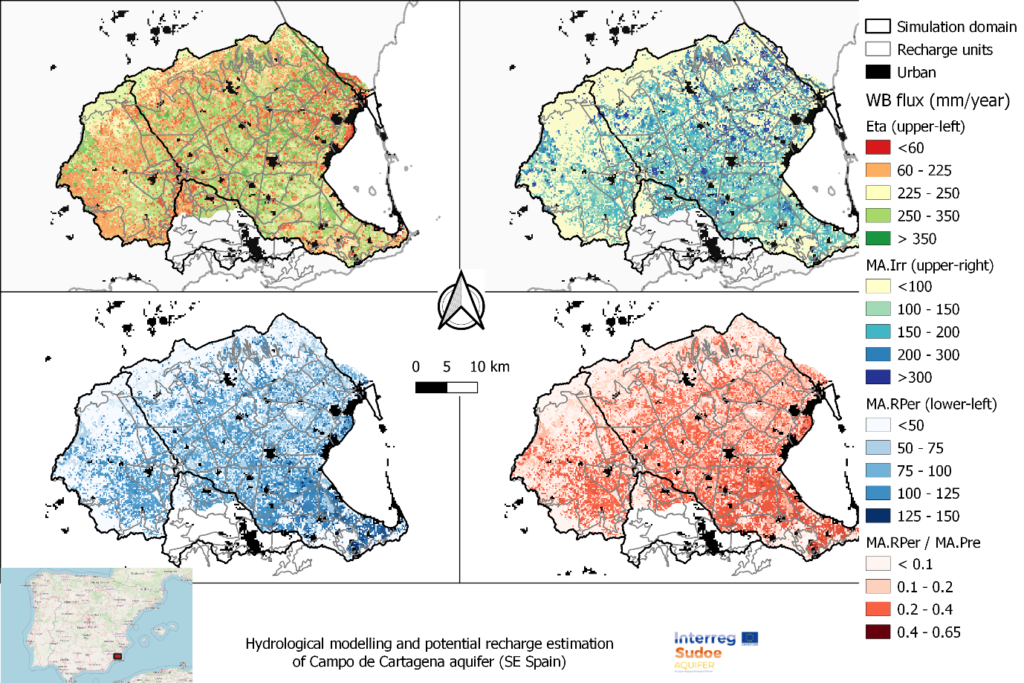This project (1) provides a critical review of previous results generated, and a SWOT analysis of hydrological simulation tools used in the area. (2) improve and update the quantification of the main water balance components, including vertical and lateral fluxes, at the basin scale in recent times (2000-2020 period) through the calibration and validation of the SPHY code. (3) evaluates historical changes (1951-2020) in groundwater recharge due to drivers of change in land use, water management, and irrigation practices.
This consultancy project is framed by the AQUIFER project, “Innovative instruments for the integrated management of groundwater in a context of increasing scarcity of water resources” (Interreg-SUDOE V programme) which aims to capitalize, test, disseminate and transfer innovative practices for the preservation, monitoring and integrated management of aquifers.
FutureWater expertise was required for providing a novel and open-source hydrological modelling framework able to quantify spatial patterns of daily root percolation as a direct surrogate of groundwater recharge in the Campo de Cartagena Quaternary Aquifer (CC-QA). This aquifer is located at SE Spain and is one of the most important vectors of water drainage to the Mar Menor lagoon.
This task is addressed through the improvement and local calibration of the SPHY code for the Campo de Cartagena and the simulation of the water balance in the soil root zone from the 1950s until the end 2020. The SPHY-Campo de Cartagena includes a new routine able to compute irrigation inputs at the pixel level based on satellite data. Timeseries of monthly root percolation are taken as good surrogates of potential groundwater recharge and used as the main forcing input to an hydrogeological model of the Quaternary aquifer. The calibration process is performed through a sensititivity-intercomparison analysis in which model-derived outputs (irrigation and streamflow) during the calibration period are cross-checked against actual observations.
Spatial patterns of root percolation and the relative contribution of irrigation return flows to the total groundwater recharge were quantified (e.g. Figure 1) under historical and current conditions. Simulation results would show the lack of a significant temporal trend in the long-term recharge rates in the aquifer, most likely due to the the strong interannual variability observed in rainfall patterns, but also by the trade-offs resulting from the combination of climate, land use and irrigation-crop management drivers.

Gerelateerde publicaties
2024 - Agricultural Water Management
How Future Changes in Irrigation Water Supply and Demand Affect Water Security in a Mediterranean Catchment
Eekhout, J.P.C., I. Delsman, J.E.M. Baartman, M. van Eupen, C. van Haren, S. Contreras, J. Martínez-López, J. de Vente
2023 - Technical report
Historical and Recent Patterns of Groundwater Recharge in the Campo De Cartagena Quaternary Aquifer by Combining Hydrological Modelling and Satellite Data
Contreras, S., J.L. García-Aróstegui, V. Robles-Arenas, J.E. Hunink


